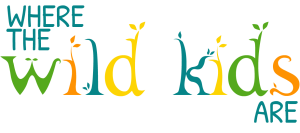What’s your child’s learning style? I think almost all of us in the homeschool world are very aware that our children all learn very differently. A while back I found this little quiz and it was so nice to be able to clearly see what learning style works best for my child. This little quiz isn’t going to tell us everything we need to know about how our children learn best, but it can be a very good starting point or reminder. Take a few moments to look through the statements below and write down the numbers that sound MOST like your child. Better yet, have your child say yes or no to the statements to get their input (if they are old enough).
- I would rather read the instructions on my own than listen to someone explain them.
- I prefer to have instructions explained out loud.
- I need lots of breaks to get up and move around to be able to focus.
- I like to draw pictures while I’m learning.
- I remember things better if I write them down.
- I remember things better when I say them out loud.
- I like to look at charts, diagrams, and maps to help me understand what I’m reading.
- I can focus better when I have a snack.
- I listen to music to help me focus.
- I can visualize what I’m studying in my mind.
- I remember jokes.
- I can focus better if I’m tapping my foot or playing with a fidget.
I’ve read through these statements about a dozen times to take the quiz. I’ve had moments where I took this quiz and then still planned lessons for my child that did not match her learning style. After a while, I learned that this silly little quiz DID help. It taught me what to expect out of my child and how to fulfill her learning needs. Take a moment to look at the answers you wrote down. If you’re lucky, you’re going to have about 4-5 that sounded most like your child and they are going to fit neatly into one of the 3 categories. If you’re like me, you’re going to have 6-7 answers written down and you’re going to fall into 2 categories!
Auditory Learners (answers 2, 6, 9, 11)
If your child is an auditory learner, they may prefer to have things explained to them or read to them. Auditory learners practice and study by reciting information out loud. They may choose to have background music while working, OR they may need quiet to focus as they are distracted by noises.
Some ideas for auditory learners:
- Have your child teach you about a topic. (I LOVE playing “born yesterday” from Bluey and having my child teach me about things)
- Record your child reciting information and then play it back to them.
- Listen to an audio book as you follow along in the physical book.
- Put information to a tune! (Schoolhouse Rock, anyone?)
- Limit noises that cause distraction
- Make a ‘study’ playlist. (Make sure to get your child’s input! I prefer classical music, but my child prefers lo-fi)
Kinesthetic Learners (answers 3, 4, 8, 12)
Honestly, this sounds like such a fun way to learn. Kinesthetic learners learn by doing and touching. They need to move and be active in order to focus!
Some ideas for kinesthetic learners:
- Read aloud and track words with your finger
- CHALK! Get out in the driveway to write those spelling words or do math! Move from place to place!
- Highlighting and underlining may help (especially with older learners)
- Playing with a fidget while learning/studying (TIP: have multiple options available!)
- Move around, take breaks frequently. (Brain breaks are popular in our house and usually include the trampoline, swing, or a youtube ‘workout’ video)
- Hands- on activities. Build models, play games, dramatic play
Visual Learners (answers 1, 5, 7, 10)
Reading, looking at graphs, and watching demonstrations are great examples of how visual learners learn. They may not do well listening for long periods of time, but can soak up information presented in front of them.
Some ideas for visual learners:
- Flash cards
- Memory style games
- Drawing illustrations
- Writing and reviewing notes (work on a shorthand that helps your child understand their own notes without writing out every word!)
- Highlighting and underlining
- Color-coding information (especially helpful if you can keep colors consistent across multiple topics)
- Charts, tables, and maps
